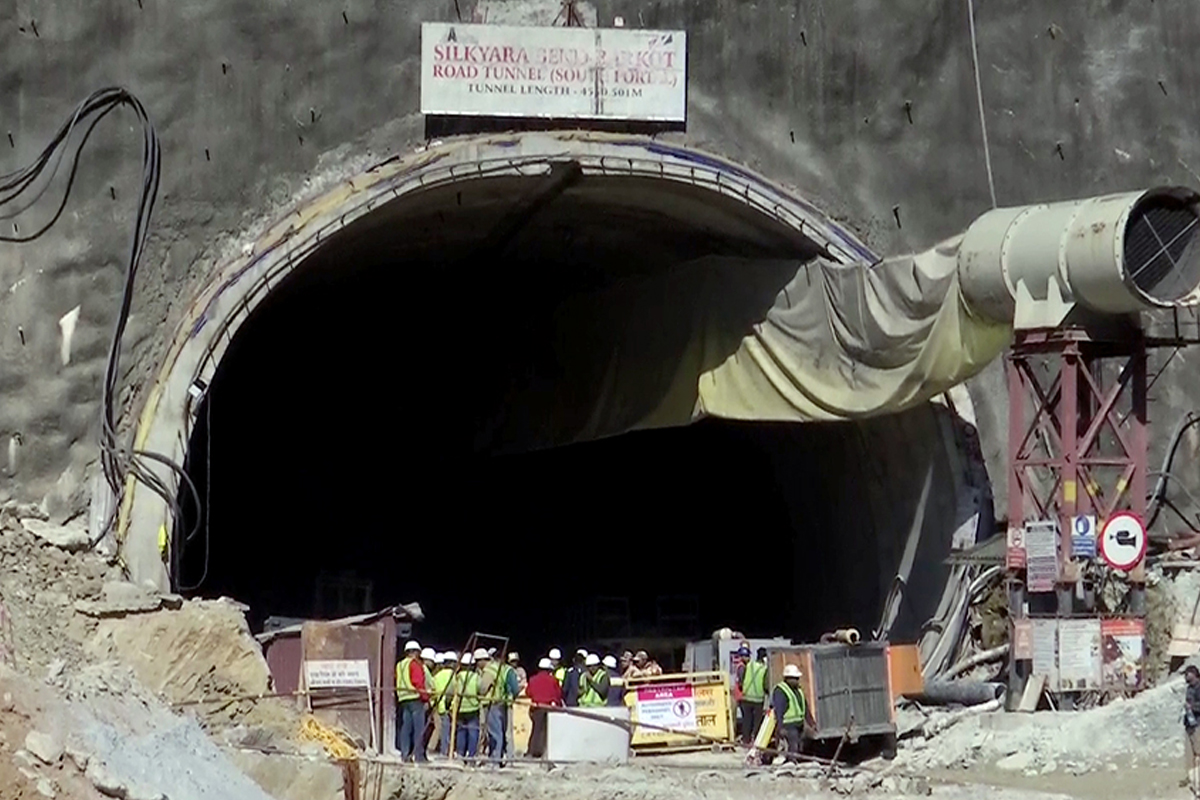The successful evacuation of the 41 trapped workers from the SilkyaraBarkot tunnel has made the entire country proud of everyone involved in the rescue operation. It has proved that patience, resilience and meticulous planning can do miracles. Minister of Road Transport and Highways Nitin Gadkari has rightly said, “This was a wellcoordinated effort by multiple agencies, marking one of the most significant rescue operations in recent years.
Various departments and agencies complemented each other despite facing numerous challenges.” Mr. Gadkari has also expressed his deep gratitude to “each agency and individual involved in this rescue operation” as well as appreciated the dedicated work done by the international rescue experts, administrative officers, and the Uttarakhand government.
Advertisement
While there is no denying that the entry of the 41 bright, cheerful and relieved faces from the darkness of the tunnel into the light of normal life becomes a moment to celebrate for the entire country, it cannot wipe out a few questions that taste bitter and are probably unpalatable to the government. The ill-fated tunnel, estimated to be 4,531m-long, is a part of the Char Dham Pariyojana (project) in Uttarakhand that aims to better connectivity amongst the religious pilgrimage sites of Gangotri, Yamnotri, Kedarnath, and Badrinath.
On completion, the tunnel would connect Gangotri and Yamunotri easily, all through the year, by reducing the existing 26 kmlong, landslide-prone road, to just 4.5 km. This would mean a drastic cut in travel time ~ a onehour journey would be reduced to just a few minutes. However, since its inception, the Char Dham project has created controversies. Environmental activists and some local residents protested against the implementation of the project claiming that it would damage the ecology of the Himalayan region.
Many experts have also argued that the Himalayas are geologically active and fragile and that is why, for the region, instead of tunnels, new methods of connectivity must be envisioned. Commenting on the Silkyara disaster, Harpal Singh, Project Head of the Zojila Tunnel, has maintained, “The Himalayas are a young mountain system, resulting in inconsistent rock formations that pose stability challenges during tunnelling.
Situations like that of Silkyara have occurred several times, but fortunately, there have been no casualties, which is why such incidents don’t make national news like Silkyara.” In fact, the Himalayas have witnessed several disasters like Silkyara in the recent past ranging from the sinking of Joshimath in Uttarakhand to the floods and landslides in Himachal Pradesh.
Repeated occurrences of disasters like these should make us rethink about the procedures used for (and also perhaps the necessity of ) the so-called ‘development’ of the region. Some argue that tunnels are a must in the Himalayan region if connectivity has to be improved. Even if one buys this argument, one is compelled to raise a few questions relating to the procedures normally followed while constructing a tunnel. Governments usually want tunneling projects to finish before the deadline.
This creates additional pressure on construction companies, compelling them to complete the project in a hurry. Such hurry is suicidal for a tunnel-project. Harpal Singh warns, “There is no room for any kind of pressure in the tunneling projects. Given our country’s Himalayan terrain, alertness remains crucial. While this alertness may cause project delays, it serves as a safeguard against tunnel collapses, which could jeopardize the entire project.”
Some facts, which are already in the light, make one question whether any such hurry was responsible for neglecting the preparatory work essential for constructing a tunnel in case of the Silkyara collapse. Incidents like the Silkyara tunnel collapse are known as ‘geological surprises.’ Experts claim that such surprises occur due to lack of proper study and groundwork, much needed for excavating mountains. In fact, before choosing a site for tunnel construction, extensive studies are needed to be conducted.
These studies include geological mapping, geophysical investigations, geo-technical investigations and risk assessments to evaluate factors like rock stability, water ingress and seismic activity. The nation should know whether all these studies were conducted prior to the beginning of the construction work for the Silkyaara tunnel.
That there were serious lapses in this regard is already evident. A member of the preliminary fact findings committee created by the government has told Reuters (on condition of anonymity) that the collapse may have been caused by a geological fault, known as a “shear zone.” Flouting the government guidelines about keeping emergency exits for tunnels longer than 1.5 km, no escape passage was also kept in the tunnel. In fact, one feels disturbed when one comes across the statement of a worker (named Rajeev Das) involved in the construction of Silkyara tunnel. He has said, “For the past two-three days, we have been feeling that perhaps, the structure is not very strong. Just a day before, when we were removing a lattice girder, we saw some debris falling. On Saturday night, a piece of concrete fell from the roof. We informed our seniors.
But before they could do anything, the incident happened.” Other than raising serious questions about whether the required groundwork was at all done before the commencement of the project, Das’s confession makes one suspect the responsibility with which the project was carried out by a private engineering company, Navyuga Engineering.
This company, however, is working under a state-owned company, National Highways and Infrastructure Development Corporation Limited (NHIDCL). One, therefore, is also bound to ask whether there was proper monitoring on behalf of NHIDCL of the work done by Navyuga Engineering Company. In fact, in the initial stage of the rescue operation, some of the relatives of the workers also complained about the reluctant attitude of the company to rescue the trapped workers. It also needs to be noted that this project initially did not get required permission on environmental grounds.
The government then got the necessary clearance from the Supreme Court by citing national security reasons as the area covered by the project is not very far from the borders. After getting the clearance from the Supreme Court, the government avoided a comprehensive environment impact assessment (EIA) of the Char Dham Pariyojana and split it up into smaller, independent projects. A report submitted by a Supreme Court-appointed expert committee in July 2020 clearly pointed out that the impact of the whole project was not properly assessed before construction began.
Hemant Dhyani, an environmentalist and a member of the Supreme Court-appointed committee, has told Reuters that the committee’s recommendation of “building a narrow tunnel of 7-8 metres width has been ignored, leading to more blasting and increased risk of collapse.” This information increases the suspicion that the project has been undertaken to satisfy pilgrims than to facilitate movements that have strategic significance. The hurry in carrying out the project with serious lapses, ignoring some important recommendations, makes one believe that the project has an eye more on the election of 2024 than on national security.
Unfortunately, a religious colour has also been added to the rescue operation. To pacify the grievances of some local people who consider this incident to be a manifestation of God’s wrath, NHIDCL organised a small ritual presided by a local priest and installed a small temple on the mouth of the tunnel on 18 November. The success of the rescue operation is now being seen by many not as a victory of science, human skill, human prowess and resilience, but as a result of God’s blessings.
Arnold Dix, an Australian tunnel-evacuation expert and the head of the International Tunneling and Underground Space Association of Geneva, has played a significant role in the rescue of the 41 workers. When the rescue operation was on, he made an interesting comment, “It’s the will of the mountain which will decide when and from which door those people come out.” Though it sounds like fatalism, this comment actually suggests that humans must have respect for the earth, that disrespect for the earth would be costly. Dix’s words are a warning in disguise. Will the government listen to it?
(The writer is Professor, Department of English and Culture Studies, and Director, Centre for Australian Studies, The University of Burdwan)
















